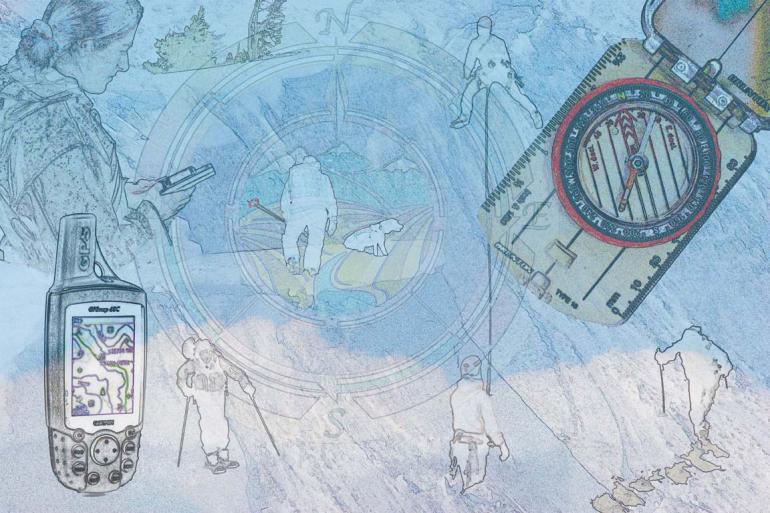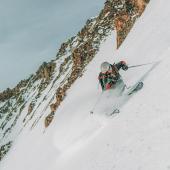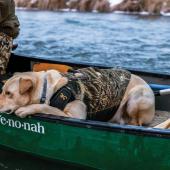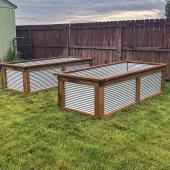Land of the Lost
The nuances of navigation.
Deciding between a compass or a global positioning system (GPS) doesn’t have to pit the purists against the techies. Both devices complement each other and both require brain power and well-honed orientation skills.
Relying solely on your navigational and observational skills—that’s where the thrill and challenge lays in using a traditional compass. You can get by with the basic-but-user-friendly model that has a clear base for map work and a liquid-filled capsule for quick reading.
After a few ambitious wilderness adventures, though, you’ll soon realize the importance of accuracy. A digital compass ratchets exactness up a notch to one degree of resolution and has automatically adjustable declination. On a timed race or when outrunning threatening weather, you gain time thanks to digital data storage and an alarm if you wander off course. These compasses require batteries, but the higher quality brands such as the Silva Nomad boast backlighting, a 500-hour lithium battery, and a low-battery indicator.
When night falls or fog conceals landmarks, digital compasses also require a back-up plan. That's where GPS comes in. Once a military tool, the GPS navigates by transmitting your coordinates to a satellite and bouncing back data to your location. If you’re lost but armed with a GPS, darkness is no longer your foe. Although it won’t display the tree on your path, it will register cliffs, rivers, and other land formations.
The GPS provides turn-by-turn directions as well as distance and time estimations between locations. Instead of charting a map in the dark or trying to see constellations on a cloudy night, maps, waypoints, and locations are at your fingertips. Depending on the memory size, you can also download topographic and road maps.
Unfortunately, the GPS’s strength is also its weakness. When mountains, deep ravines, canyons, and dense forests interrupt satellite feed, access to navigation is lost. Higher-end GPS models equipped with Wide Area Augmentation (WAAS) eliminate much of that problem.
Balance a love of charting your own course with some cool technology that keeps you connected and safely navigating. Just understand that whichever you choose there’s no getting around knowing the basics of navigation.
For help in making your decision check out nomadik.com/how-to-guide/selecting-gps-devices.aspx and nomadik.com/gear-equipment/techno/compasses/.
Paul Lander is a contributing writer for Nomadik.com and a member of the Nomadik Fanatik community of outdoor life enthusiasts. With many years of experience in wilderness adventure and outdoor recreation, this community of intrepid travelers shares personal experiences and expertise with fellow Nomads all over the world.












